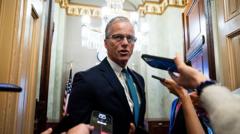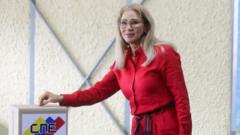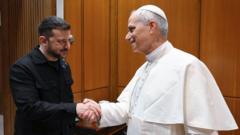The Vatican's papal conclave entered its second day on Thursday, as the 133 cardinals continue their search for a successor to Pope Francis, who passed away last month. The cardinals began their deliberations in the secluded Sistine Chapel without any external communications, bound to secrecy.
### Papal Conclave Continues: Second Day of Secrecy and Voting

### Papal Conclave Continues: Second Day of Secrecy and Voting
The selection of the next pope by 133 cardinals remains underway with no consensus reached yet.
On Wednesday, the first round of voting failed to produce a new pope, leading to further discussions amongst the cardinals. This conclave, distinguished by its size and the diverse backgrounds of the cardinals, marks a turning point for the Roman Catholic Church, which is grappling with various challenges, including financial strains and the aftermath of sexual abuse scandals.
Traditionally, the selection process requires a two-thirds majority vote to elect the new pontiff. With the cardinals opting for four rounds of voting each day following the first ballot, the atmosphere remains tense and focused. For millennia, conclaves have been key to determining the direction of the church, and this gathering promises to reflect varying perspectives on issues such as inclusivity and conservatism within the church.
The voting, shrouded in anonymity, entails the use of paper ballots inscribed with the phrase "Eligo in Summum Pontificem," signifying each cardinal's choice. The results are communicated through smoke signals, whereby black smoke indicates no election outcome and white smoke announces a new pope.
Despite speculations about potential frontrunners, including Cardinal Pietro Parolin and Cardinal Luis Antonio Tagle, the conclave is set to unfold in a manner that leaves much to be decided.
How long this conclave will last remains uncertain; historical precedents suggest durations varying from a matter of hours to prolonged months. The cardinals convened expect to resume voting around 10:30 a.m. local time, and similar voting practices are anticipated throughout the day.
As the secrecy persists, the cardinals strive for unity while confronting a rapidly changing world that yearns for a leader to guide the future of the church.
Show more.
Traditionally, the selection process requires a two-thirds majority vote to elect the new pontiff. With the cardinals opting for four rounds of voting each day following the first ballot, the atmosphere remains tense and focused. For millennia, conclaves have been key to determining the direction of the church, and this gathering promises to reflect varying perspectives on issues such as inclusivity and conservatism within the church.
The voting, shrouded in anonymity, entails the use of paper ballots inscribed with the phrase "Eligo in Summum Pontificem," signifying each cardinal's choice. The results are communicated through smoke signals, whereby black smoke indicates no election outcome and white smoke announces a new pope.
Despite speculations about potential frontrunners, including Cardinal Pietro Parolin and Cardinal Luis Antonio Tagle, the conclave is set to unfold in a manner that leaves much to be decided.
How long this conclave will last remains uncertain; historical precedents suggest durations varying from a matter of hours to prolonged months. The cardinals convened expect to resume voting around 10:30 a.m. local time, and similar voting practices are anticipated throughout the day.
As the secrecy persists, the cardinals strive for unity while confronting a rapidly changing world that yearns for a leader to guide the future of the church.
Show more.






















